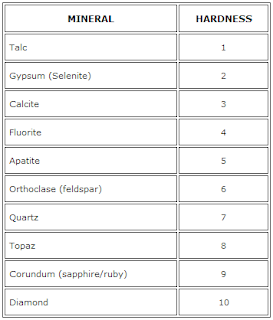Nowadays, the
lack of energy resources is one of the main worldwide issues. The main problem
is that the primary source used is based on fossil fuels, which are a finite. In
the recent decades, the idea of sustainability has arisen, where not only
energy, but all the natural resources would need to be managed in a way to be
available not only for the current generation, but for the following ones. With
that, methods to obtain energy from infinite resources – such as water, wind,
sunlight – has become more attractive. However, the main leaders in the world
still focus their attention in the use of fossil fuels.
In this
scenario, the petroleum industry keeps with its huge power over different kinds
of industries. Sand mining is an old activity that serves to many purposes,
such as glass production, foundry molds and a number of other uses that kept
the industry alive along all these years. However, the development of a
technique to extract more oil and gas using a specific kind of sand made this
industry to expand increasingly again over the past years.
The process of
hydraulic fracturing allows the extraction of more oil and gas from wells where
it was considered unproductive already. The gas and oil is hold within a rock,
and its lack of porosity can minimize the amount of product able to be
explored. The method uses frac sand, water and chemicals that are injected at
the rock in an extremely high pressure. The friction creates fractures in the
rock and the sand guarantees the fractures will keep open. (Wisconsin DNR,
2012) With that, the porosity increases, allowing the exploration of oil and
gas in a much higher rate than before.
However, not any
sand can be used for this process. Firstly, to be able to cause a fracture, the
composition of the rock needs to have a high level of hardness. In this case,
the ideal element would be silica, commonly called quartz, which has a hardness
of 7 in the Mohs scale (Figure 1). Thus, the sand extracted needs to have a
high purity in this specific element. Moreover, the sand grain needs to have a
specific size, which will depend on the type of deposition that formed the
geological unit: if the transportation occurred in a high energy environment,
the grains will be larger than if it happened in low energy transportation.
Lastly, the form of the grain is also important, it needs to be very well
rounded, which will also depend on the type of deposition: the longer the time
of transportation, the more rounded the grains will be.
 |
| Figure 1 - Mohs Scale |
In Wisconsin, a
sandstone formation covers the western region and meets all these requirements
mentioned. Even though another areas of Wisconsin also have potential to sand
mining, they are originated from recent glaciations and beach formations, then,
it’s a really impure kind of sand and also angular, instead of rounded, reason
why is not appropriate for the process. (Wisconsin Geological and Natural
History Survey, 2013)
Because of that,
in the past years, a lot of sand mines were placed in this location. The
development is happening in a high rate, reason why the department of natural
resources is trying to keep track of it by encouraging a specific registration
for frac sand mining in Wisconsin. Also, the authorities are concerned with the
implication in the environment related to the pollution and contamination of
air and water in the areas where the sand exploration is being done. In the
other hand, the economic development derived from these mines appears as a
benefit.
Considering this
whole scenario, the analysis of the sand mines distribution and impact can be
done in a lot of ways by the use of a geographic information system. For that,
the geography inquiry process is used. There are a lot of specific questions
that can be made about this issue because it’s very broad. Then, first is
necessary to decide which part of the problem is going to be analyzed. Then, to
acquire the data may be a challenging step, but extremely necessary to have
consistent results. In this step, it’s necessary to keep track of the data
quality, thinking of the different dimensions of accuracy. After having the
appropriate data available and ready to be used, a preliminary exploration
using symbolization and cartography is useful to have a basic idea of the
scenario. Then, with the use of geoprocessing tools, a higher level of
understanding in resulted. With that, it’s possible to provide information
enough so the authorities can act in geographic knowledge.
In this project,
the impact of the relation of the sand mine with its costumers – the ones who
will apply the sand to the fracking process – will be the main subject. The
transportation of sand involves the use of specific sorts of trucks, who carry
a higher weight that the road might support. Since the roads were not built
with the focus on this recent development of sand extraction, they might not be
prepared for that. Then, the impact will be examined by a network analysis. As
a result, it’s expected to acquire helpful information that can suggest
appropriate initiatives and position from the government.
References
DEPARTMENT
OF AGRICULTURE, CONSERVATION AND FORESTRY. (2005) testing
the hardness of common minerals. Available: http://www.maine.gov/doc/nrimc/mgs/education/lessons/act20.htm [11 Mar 2013]
Wisconsin Department
of Natural Resources (2012) Silica Sand Mining in
Wisconsin [Online], Available: http://dnr.wi.gov/topic/Mines/documents/SilicaSandMiningFinal.pdf
[11 Mar 2013]
Wisconsin GEOLOGICAL
AND NATURAL HISTORY SURVEY (2013) Frac Sand in Wisconsin [Online], Available: http://wisconsingeologicalsurvey.org/pdfs/frac-sand-factsheet.pdf
[11 Mar 2013]

No comments:
Post a Comment